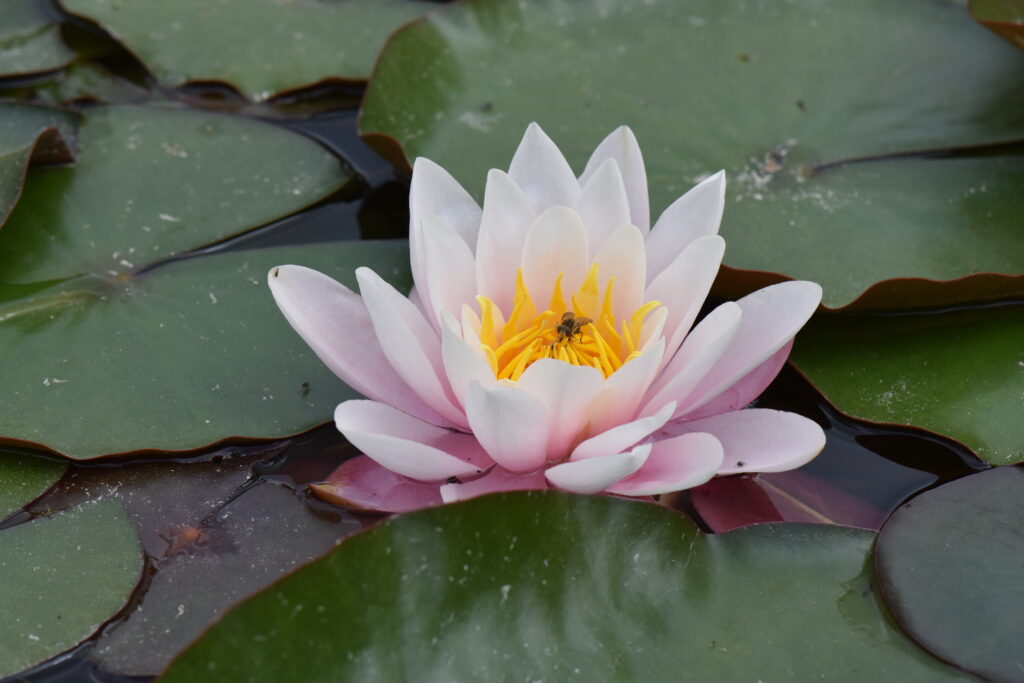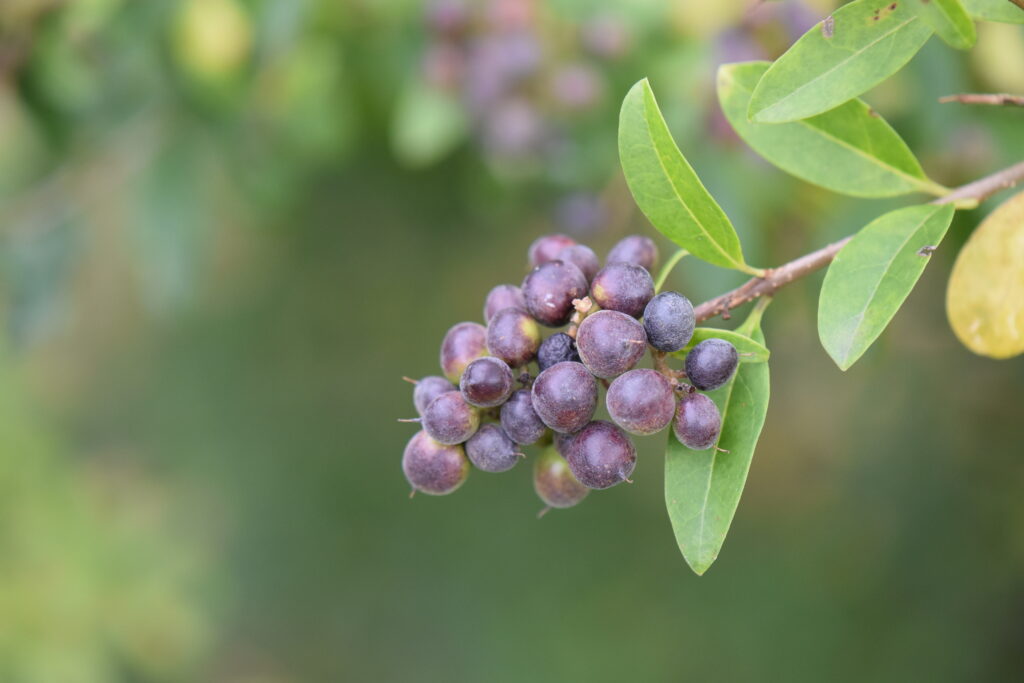The rhythm of nature or phenology and its unique seasons.
One of the fundamental aspects of the natural world is the seasonality of various phenomena, such as flowering and fruiting of plants. As time passes, some give way to others, and these to the next, and so on until growth and development are completed. This is an annual cycle, which is a peculiar rhythm of the Earth, the rhythm of the living planet. However, this rhythm depends on weather conditions and on the changes of seasons, and these phenology in Central Europe distinguishes as many as eight! Although the term “phenology” (a combination of two Greek words phainomaii – to become, to appear and logos – science) sounds rather mysterious, it means nothing less than the science of change, the appearance of various phenomena in the natural world.
Why are phenological seasons so special? Is there something really special about them, something worth paying attention to? Well, their uniqueness is due to the fact that they are determined neither by the way the sun illuminates the Earth (in the case of astronomical seasons), nor even by any strict date in the calendar. Plants tell us what season has just begun. They play the role of the “measuring apparatus” here. To start using it, all we need to do is closely observe what is currently happening in nature.
Early spring / the dawn of spring
This is the time when plants awaken to life after winter dormancy. The first trees, which are harbingers of this period, bloom even before the leaves unfold. These are generally wind-pollinated plants. The lack of foliage promotes the transfer of pollen by the wind to the flowers of other individuals. During this period, there are also significant temperature fluctuations throughout the day, and frosts are still common. Therefore, plants flowering in the pre-spring are characterized by high resistance to adverse weather conditions.
The onset of spring is heralded by the pollination of common hazel (Corylus avellana L.), black alder (Alnus glutinosa (L.) Gaertn.) and the flowering of wolf laurel (Daphne mezereum L.). It is also worth paying attention to small herbaceous plants that emerge from among the leaves. This is also their flowering time. These include snowdrop (Galanthus nivalis L.), coltsfoot (Tussilago farfara L.), common hellebore (Hepatica nobilis Mill.), wood anemone (Anemone nemorosa L.) and marsh marsh marigold (Caltha palustris L.).
Primrose / early spring
It is a rather short season, an intermediate stage on the way to a full spring. Due to its transitional nature, it is characterized by unstable weather. Although it is already noticeably warmer, frosts can still occur.
The name “primrose” derives from the harbingers of this period – blooming primroses (Primula officinalis (L.) Hill). Flowers of dandelion (Taraxacum officinale L.), common strawberry (Fragaria vesca L.) and blueberry (Vaccinium myrtillus L.) also appear.
Among the trees and shrubs whose flowering determines primroses are the common cherry (Prunus padus L.), blackthorn (Prunus spinosa L.), bird cherry (Prunus avium (L.) L.), common cherry (Prunus cerasus L.), wild apple (Malus sylvestris Mill.) and cultivated pear (Pyrus communis L.). It is also worth mentioning that primrose plants simultaneously flower and develop leaves.
Full spring / late spring
This is a period characterized by an increase in sunshine and air temperature and a decrease in precipitation. Woody plants that have already leafed out bloom.
The harbingers of late spring are the mountain ash (Sorbus aucuparia L.) and broom broom (Cytisus scoparius (L.) Link).
Among herbaceous plants, the arrival of the fullness of spring is signaled by their flowers: sharp buttercup (Ranunculus acris L.), cornflower (Centaurea cyanus L.), clematis (Ajuga reptans L.), and yellow stonecrop (Galeobdolon luteum Huds.).
It is very often assumed that this season is also marked by the common lilac (Syringa vulgaris L.) and the common chestnut (Aesculus hippocastanum L.). Although they do indeed bloom during this period, they are not native plants, but only locally established. Both came to our area through human activity from the Balkan Peninsula, where their natural sites are located.
However, priority should be given to indigenous “measuring apparatus”, as it is best synchronized with the cyclicity of weather phenomena that occur on Polish territory – it has been occurring here for several thousand years.
Early summer
With the onset of early summer, a further increase in air temperature is felt. This is also the period when the day lengthens.
This season is marked by the flowering of elderberry (Sambucus nigra L.), swallowleaf dogwood (Cornus sanguinea L.) or common ligustrum (Ligustrum vulgare L.). The flowering of acacia robinia (Robinia pseudoacacia L.) is often taken as a harbinger of early summer. However, as a plant of foreign origin (North America), it should not be prioritized in this regard.
Of herbaceous plants, St. John’s wort (Hypericum perforatum L.) is in bloom, moreover, white water mushroom (Nymphaea alba L.) is in bloom on standing or slow-moving waters. In addition, the first ripe fruits of the common strawberry (Fragaria vesca L.) are appearing.
Summer / late summer
The smooth transition between early and late summer is due to the weather conditions that have already stabilized in the country. This is undoubtedly the warmest period of all.
The herald tree of the period is the flowering small-leaved linden (Tilia cordata Mill.), and among the herbaceous plants is the common verdure (Tanacetum vulgare L.) and numerous species of spurge (Cirsium sp.).
The traveler’s chicory (Cichorium intybus L.) is also in bloom, although counted among the archeophytes – permanently established plants that arrived in our area before the end of the 15th century – it is considered a marker of summer.
Also worth noting are the ripening fruits of the raspberry proper (Rubus idaeus L.), which also herald to us this phenological season.
Early autumn
During this period, the day is already visibly shortening and the temperature is dropping. At this time, the fruits and seeds of many plant species ripen, including common ligustrum (Ligustrum vulgare L.) and lingonberry (Vaccinium vitis-idaea L.). It is also the flowering season of common ivy (Hedera helix L.) and ninebark (Carlina sp.).
Autumn / full autumn
This is the time when most plants prepare for winter dormancy, and annual plants die. However, they ensure the continuity of existence by bearing fruit and with it seeds.
Since it will be impossible for most plants to carry out the process of photosynthesis in winter, they take decisive steps to adapt to the coming unfavorable period – they shed their leaves. This process begins with the breakdown of chlorophyll in the leaves. Chlorophyll is a green dye that absorbs energy from the sun’s rays – necessary for photosynthesis. As a result, other pigments that were previously invisible are exposed. These are carotenoids and xanthophylls – pigments that are responsible for the beautiful autumn colors of leaves – from golden to orange. In contrast, anthocyanins are produced only in autumn by plants. They are responsible for the leaves’ pink and red coloration.
The breakdown of chlorophyll leads to the discoloration of leaves. It is this phenomenon that marks a full autumn for us. It is sometimes divided into two additional sub-periods – golden (which we all longingly await every year) and leafless.
Indicator plants here are our domestic trees such as maples – common, field and sycamore (Acer platanoides L., A. campestre L., A. pseudoplatanus L.), small-leaved and broad-leaved linden (Tilia cordata Mill, T. platyphyllos Scop.), pedunculate and sessile oak (Quercus robur L., Q. petraea (Matt.) Liebl.), papillary birch (Betula pendula Roth), common beech (Fagus sylvatica L.), or common hornbeam (Carpinus betulus L.).
Winter
In our climate zone, this is the period of plant dormancy. The conditions prevailing at that time are not favorable for nature to be vibrant. Low temperatures, a shorter day and hard-to-reach water (frozen ground) are among the factors that cause plant growth and metabolism to stall. However, the stoppage of life processes does not occur in all plants – in evergreen plants such as the common pine (Pinus sylvestris L,) some activity is observed in winter, in them there is only a slowdown of metabolic processes.
In the Garden, we use a methodology according to which the arrival of winter is heralded by three consecutive days with maximum temperatures not exceeding 0°C.
| Phenological season/year | 1. pre-winter (the dawn of spring) | 2. primrose (early spring) | 3. full spring (late spring) | 4. early summer | 5. summer | 6. early autumn | 7. autumn | 8. winter |
| █ | █ | █ | █ | █ | █ | █ | █ | |
| 2019 | 18 II | 05 IV | 30 IV | 23 V | 15 VI | 08 IX | 08 X | – |
| 2020 | 07 II | 09 IV | 04 V | 26 V | 15 VI | 11 IX | 12 X | 16-17-18 I |
| 2021 | 24 II | 20 IV | 17 V | 01 VI | 28 VI | 17 IX | 11 X | 07-08-09 XII |
| 2022 | 10 II | 12 IV | 10 V | 24 V | 26 VI | 16 IX | 28 IX | 14-15-16 XII |
| 2023 | 16 II | 13 IV | 11 V | 29 V | 26 VI | 14 IX | 16 IX | 28-29-30 XI |
| 2024 | 16 II | 30 III |
Legend to the table:
- Flowering bloom of snowdrop, common hazel
- Flowering bloom of dandelion, plum blackthorn
- Flowering of the rowan tree
- Flowering of elderberry, white mushroom
- Flowering of the small-leaved linden tree
- Fruit ripening of common ligustrum, flowering of common ivy
- Discoloration of leaves of common maple, field maple
- Three consecutive days with maximum temperature below 0°C














